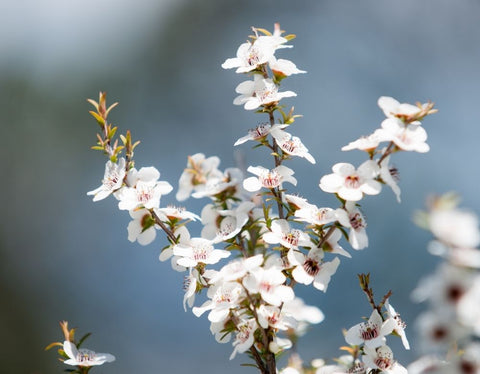3 Spectacular New Zealand Native Plants And How To Use Them
New Zealand And Our Natives
We have grown up in the ever-changing kiwi landscapes that we call home, and we are also very lucky to have a wealth of plants that we can use to help support our family and our personal health and wellness.
New Zealand native plants have become trendy and more utilised recently and we can see why as they are full of amazing plant chemicals that can help the environment as well as us!
Rongoa (Māori medicine)
We would also like to acknowledge our original scientists and plant advocates– the Māori who, on arrival to Aotearoa, discovered and worked with the native plants that resided here. They are the ones we look to and thank for finding, documenting and using the amazing indigenous plants we have today.
Traditionally a lot of our New Zealand native plants were used topically. There is documentation to show traditional internal use - but this was always in small doses.
With the arrival of the Europeans, Māori used Rongoa (Māori medicine) to treat ill health from infectious disease and the physical effects of colonisation. These events saw an increase in internal decoctions and infusions, which was the starting base of what we use and know today.
1. Akeake
Botanical name – Dodonaea viscosa
Parts used – Leaves, seeds, root
Main uses:
- Internally for pain
- Help with fevers
- Inflammation
- Gut cramps or spasms
Used topically:
- Toothache
- Headaches (helps to rub on temples)
- Rub on joints, cuts, bites, skin rashes
Akeake is a fast-growing shrub that flowers in late autumn and will often self-seed. In Dunedin you can find it as parts of shelter belts. We use this amazing New Zealand native plant in our Chest Tonic.
If you find some akeake you could pick a small jar of leaves to dry and use as tea or into a tincture. You can use between 1.5 -3gm of dried akeake a day.
It could also be infused in olive oil and made into a balm, to be rubbed on sore joints.

Horopito
Botanical name – Pseudowintera colorata; P. axillaris
Common names – Peppertree
Parts used – Fruit and leaves
Main uses:
Topically –
- For painful bruises, joint inflammation as it helps to bring the blood flow to the skins surface
- For wounds, cuts, burns when used as a poultice
- Fungal infections such as candida albicans, ringworm
- Toothache
- Insect repellent
Internally –
- Diarrhoea
- Stomach-ache and cramps
- Circulation booster, great for chilblains
- Respiratory conditions (stimulating expectorant – helps you cough ‘things’ up.
Horopito is an evergreen tree that thrives in colder regions. It is often found on the edges of forests. It is often left untouched as the taste is not to many insects/birds liking!
🌿 Related: Winter Foraging - 10 Plants To Forage This Season

If you find horopito you can dry the leaves, crush them and then add them to a digestive tea mix (with fennel seeds/peppermint leaves) to help with over indulgence. You can also used dry leaves in your cooking. Add them to roasted meat/vegetables for a kick. Or you can grind them up and add them to your favourite salt. You can use between 0.5gm to 1.5gm a day of dried horopito.
Our Anti-Flam Tonic is a great soother for upset stomachs. The combination of turmeric and horopito helps to settle and reduce inflammation within the digestive tract.
Horopito is hot, which helps to move circulation around the body. If you have peptic or stomach ulcers horopito is probably too hot for you!
🌿 Related: You can read more about horopito here

Mānuka
Botanical name – Leptospermum scoparium
Common name – Tea tree
Parts used – Leaves, flowers, twigs and bark
Main uses:
Topically -
- Wounds, cuts, sores
- Bacterial and fungal infections (athletes’ foot and candida)
- Skin upsets
- Mouthwash
Internally -
- Nervous diarrhoea and diarrhoea in general as it is astringent (high in tannins like black tea)
- Indigestion
- Fevers
- Ills and chills
- Anxiety helps support the nervous system due to its bitter taste
Mānuka is well known for the medicinal boost it gives honey, but the plant itself is amazing on its own. It is a perennial shrub that can grow quite tall and thick. Mānuka has large numbers of very small, pointed leaves, up to 12 mm long and about 4 mm wide.
As with akeake and horopito you can dry the leaves or flowers and add a small amount to a tea and use to support digestion and your nervous system.
Ideally you would be using 1.5gm of dried herb twice daily. An important thing to remember is to take it well before a meal as it can stop you absorbing some minerals from your food.
Mānuka is an important component in our Immunity Tonic, Liver Bitters and our Elderberry Switchel.
🌿 Related: The 3 Ingredients In Liver Bitters That Will Help You Feel Amazing




